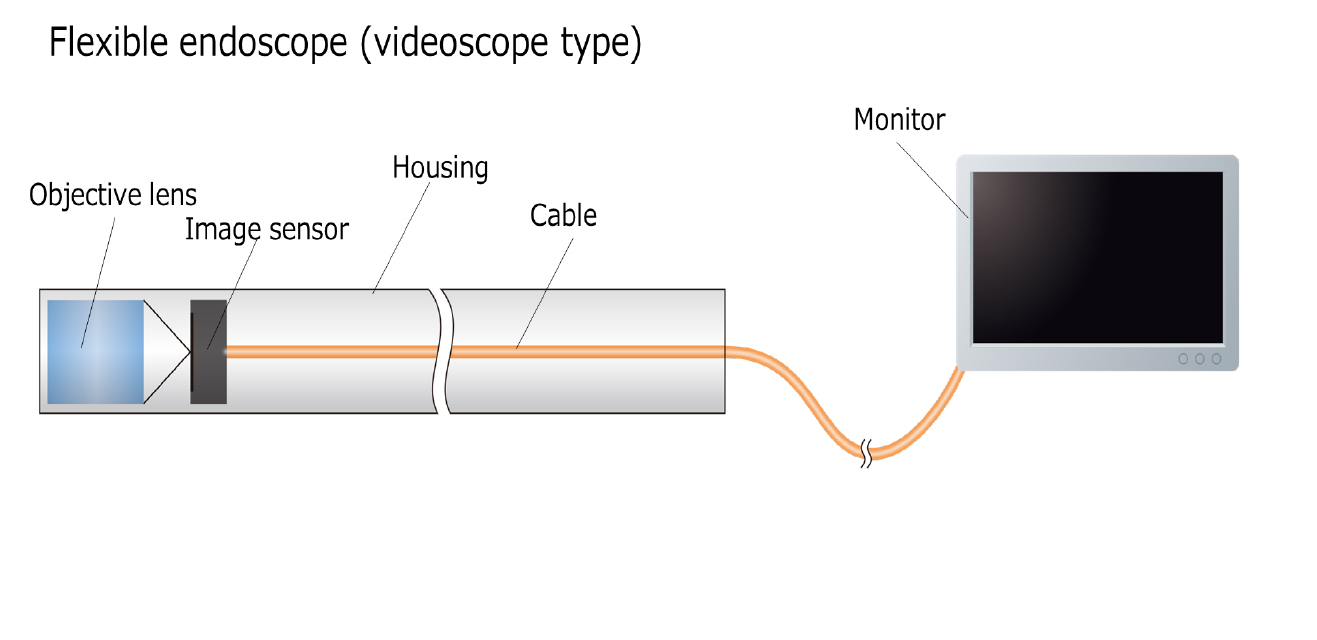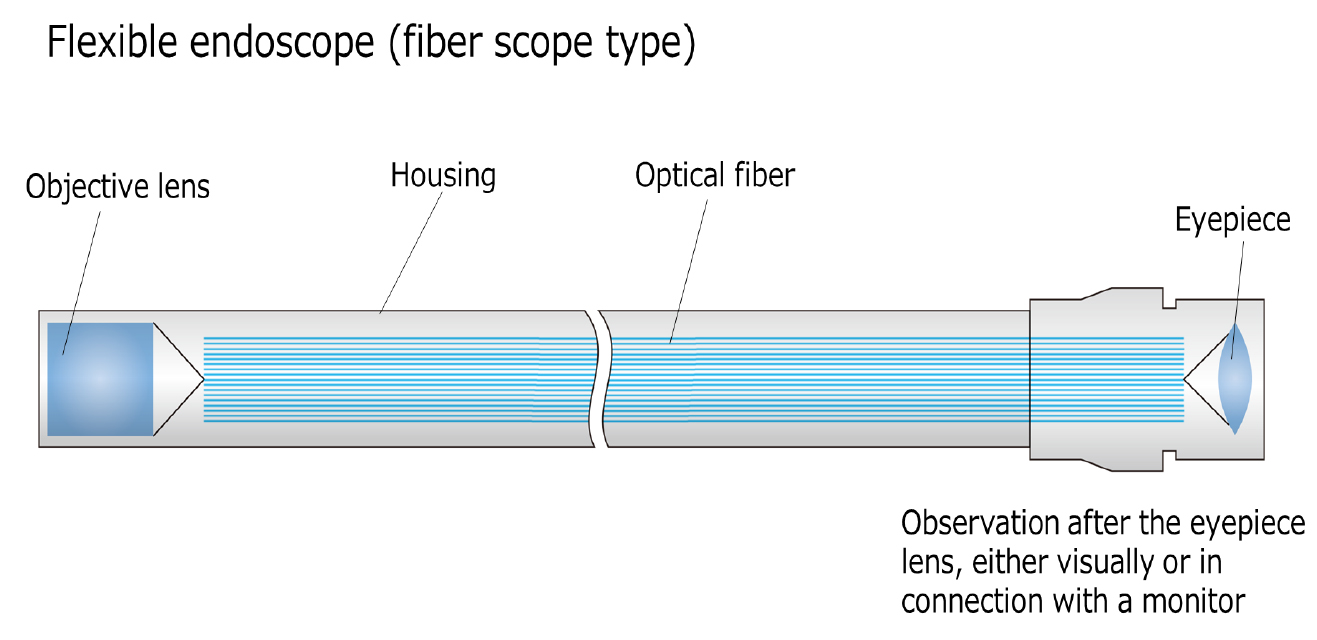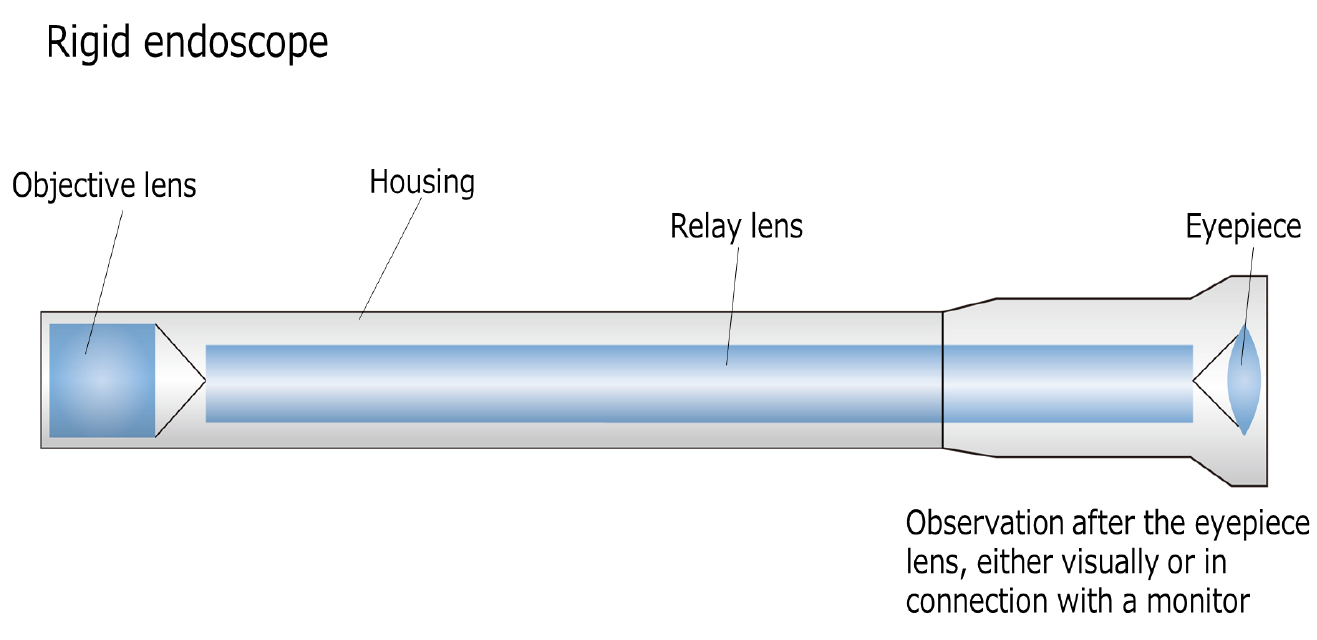2024.03.19
- Top
- Applications
- Composition and role of lenses used in endoscopes
Composition and role of lenses used in endoscopes
2022.12.05
Endoscopes are used for industrial and medical applications, but the basic structure of both is the same. Lenses are used inside and at both ends of the endoscope. Thin shape of endoscopes make it more difficult to incorporate a lens with a general spherical shape. This is an area where our SELFOC® lenses, with their cylindrical shape, easy to incorporate, and high optical performance with a very narrow diameter, are in use.
Types of Endoscopes and role of lenses
There are two types of endoscopes: industrial and medical. Take medical use as an example, there are two types of endoscopes: Flexible endoscopes, which are inserted through the mouth to examine the inside of digestive organs, and Rigid endoscopes, which are inserted through a small hole in the body for surgical procedures and used to see what is happening from the outside organs. A flexible endoscope is often called a gastroscopy. As the name implies, the body of the flexible endoscope is soft and can be bent in order to move through the intricately shaped internal organs. Rigid endoscopes are straight and cannot be bent because they are made of stainless steel tubes or other materials.
In the category of flexible endoscopes there are also two types: the videoscope type, which has an imaging device at the endoscope tip, and the fiber scope type, which uses optical fiber to transmit images acquired at the endoscope tip to the hand.
Although the objects to be observed are different, industrial endoscopes, like medical endoscopes, can be divided into the same types.



Among the above endoscope products, our SELFOC® lenses are used in objective lenses for flexible endoscopes and objective and relay lenses for rigid endoscopes.
What is an Objective Lens
In an endoscope, the lens on the side that the doctor looks through is called the eyepiece, and the lens on the side of the affected area to be observed is called the objective lens. The role of the objective lens is to capture the light reflected from the affected area and its surroundings and convert it into a small image.
What is an Relay Lens
In rigid endoscopes, our SELFOC® lenses are used not only for objective lenses but also for lenses called relay lenses. The role of the relay lens is to send the image of the observed object entering through the objective lens to the eyepiece at the same size. This lens is called a Relay Lens because it relays the image.
Performance required for endoscope lenses
As described above, endoscopes use several lenses, and what is required of these lenses is to produce a clear, bright image over as large an area as possible. In addition, for medical applications, high biocompatibility is required because the objective lens is the part that is inserted into the body.
And size, especially the outside diameter, is also important. Since the role of an endoscope is to enable the viewer to see images in places that are inaccessible to humans, it is desirable that the outer diameter of the endoscope be narrow. Especially in the medical field, minimally invasive surgeries using endoscopes that are less burdensome to the patient are in demand, and thinner endoscopes are required because a thinner outer diameter is directly related to the burden on the patient.
SELFOC®, the best objective lens for endoscopes
SELFOC® lens features
The SELFOC® lens is a cylindrical lens called a Gradient Index lens. Unlike commonly used spherical-shaped lenses, the material itself has a refractive index distribution, so that even if both end faces of the lens are flat, it still functions as a lens. This has the advantage that, unlike spherical lenses, special lens holders are not required and are easy to assemble and handle. It also features a wide viewing angle of up to 70 degrees and low aberration.
As for the outer diameter, which is an important element for endoscopic lenses, SELFOC® lenses are available in a lineup of extremely thin products with a minimum diameter of φ0.2 mm, which makes it possible to realize extremely thin endoscopes.
Endoscopic technology is evolving day by day, with the advent of capsule endoscopes that record images of internal organs until they are taken from the mouth and ejected, high-resolution endoscopes with high-definition monitors, surgical robots, and remote surgery, requiring smaller, brighter, and higher definition lenses. SELFOC® lenses have the performance to meet these needs.


